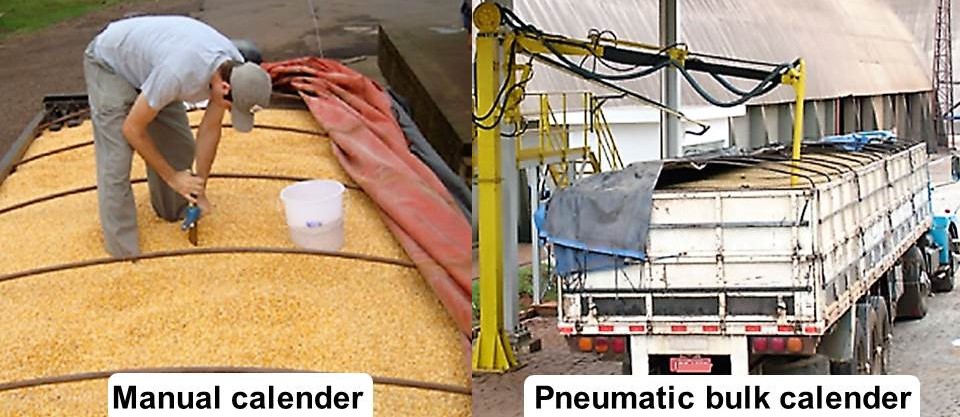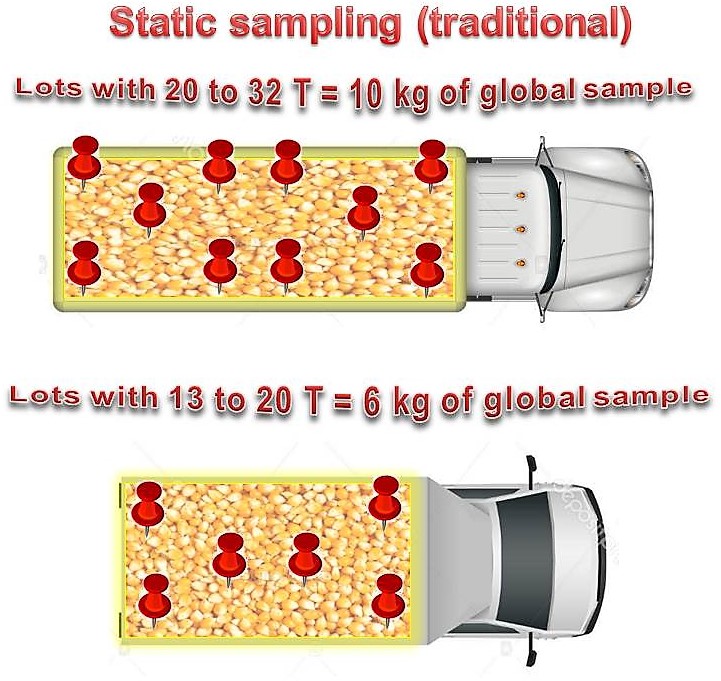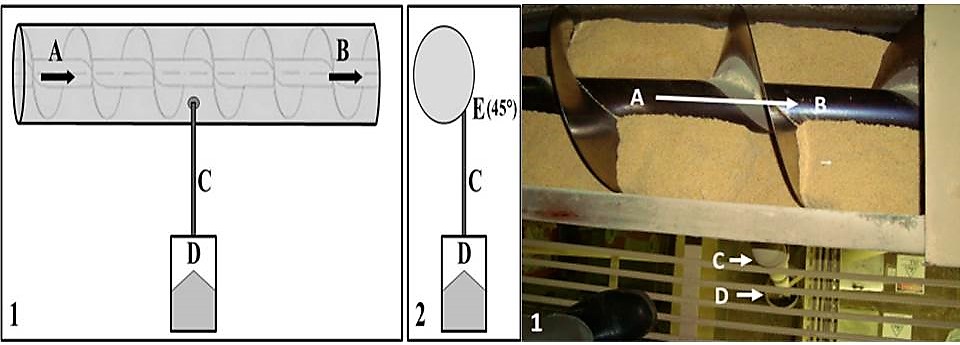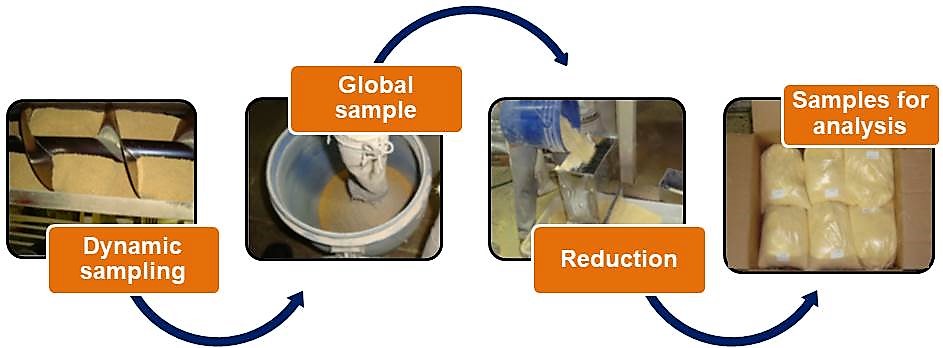The exact determination of the mycotoxins concentration in a lot is considerably challenging, since there is heterogeneous distribution of contaminated grains. In order to take the most representative samples as possible, and thus achieve trustworthy results, some specifications must be followed to minimize flaws.
There are two types of sampling:
Static
Static sampling: performed when the lot is motionless. In bulk trucking, it may be accomplished with manual or pneumatic bulk calenders.

The steps below should be followed in order to perform static sampling:

The collection points must be taken into consideration so that sampling is more effective and also representative of the entire truckload of grain.

Dynamic
Dynamic sampling: performed when the lot is in movement. It is accomplished via an automatic or manual system.
The automatic sampling is quite practical and efficient, hence its wide use. The automatic samplers and other simpler systems, as the collection of previously ground increments through perforations in the tubes, especially those with endless screw (curls), make the procedure significantly easier. Highly representative samples are thus obtained.
The sample flow through the curls may be seen in the figure below:

1 – Side view: The arrows (A and B) indicate the corn barn flow in the transporting screw. The increments are collected through tube C and stored in receiver D (global sample).
2 – Transversal cut: The increments exit through whole E (8-15 mm diameter, depending on the screw), located at an angle of 45º from the base on the right side of the external tube of the transporting screw, considering the flow of the raw material.
The steps below should be followed in order to perform dynamic sampling:






